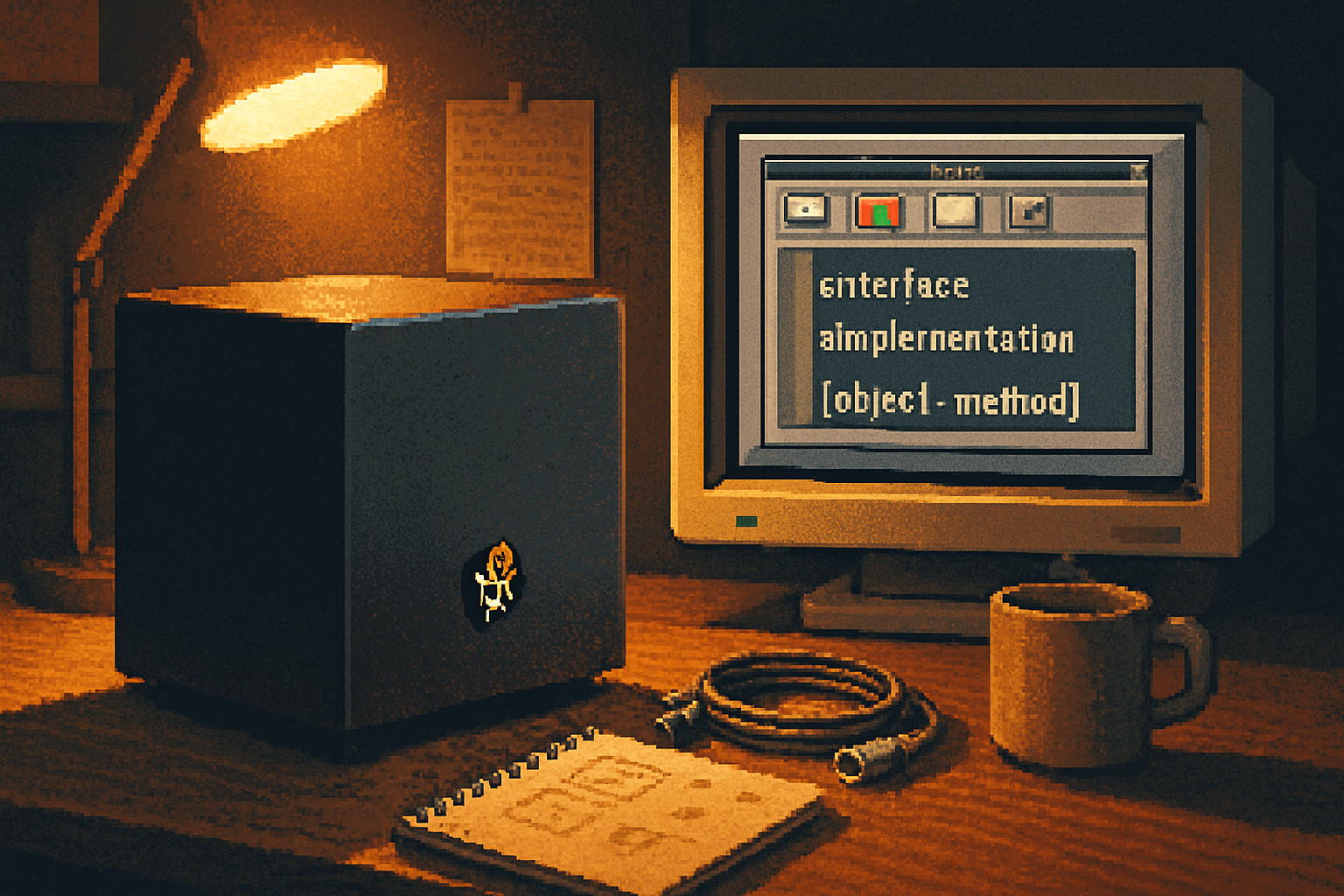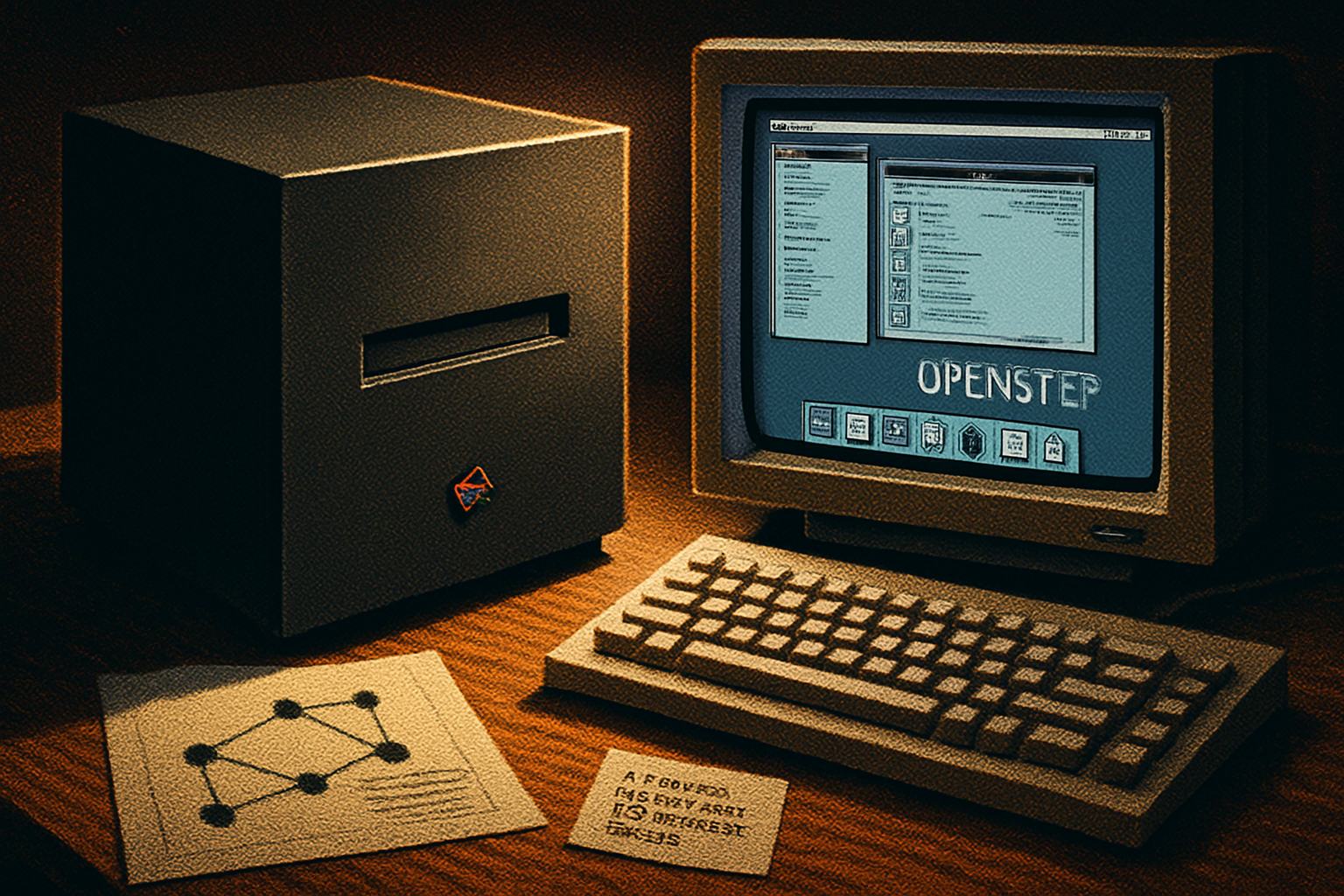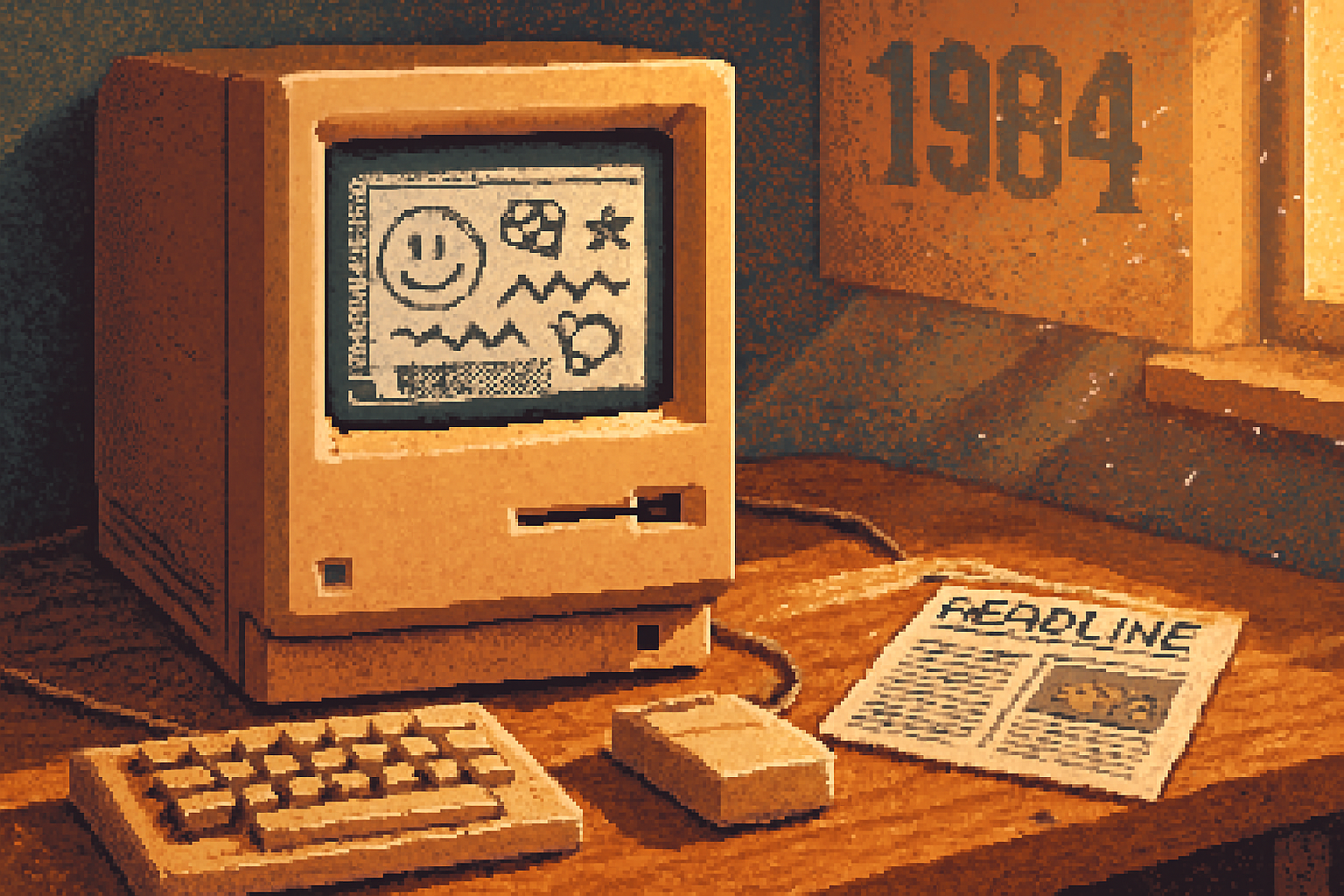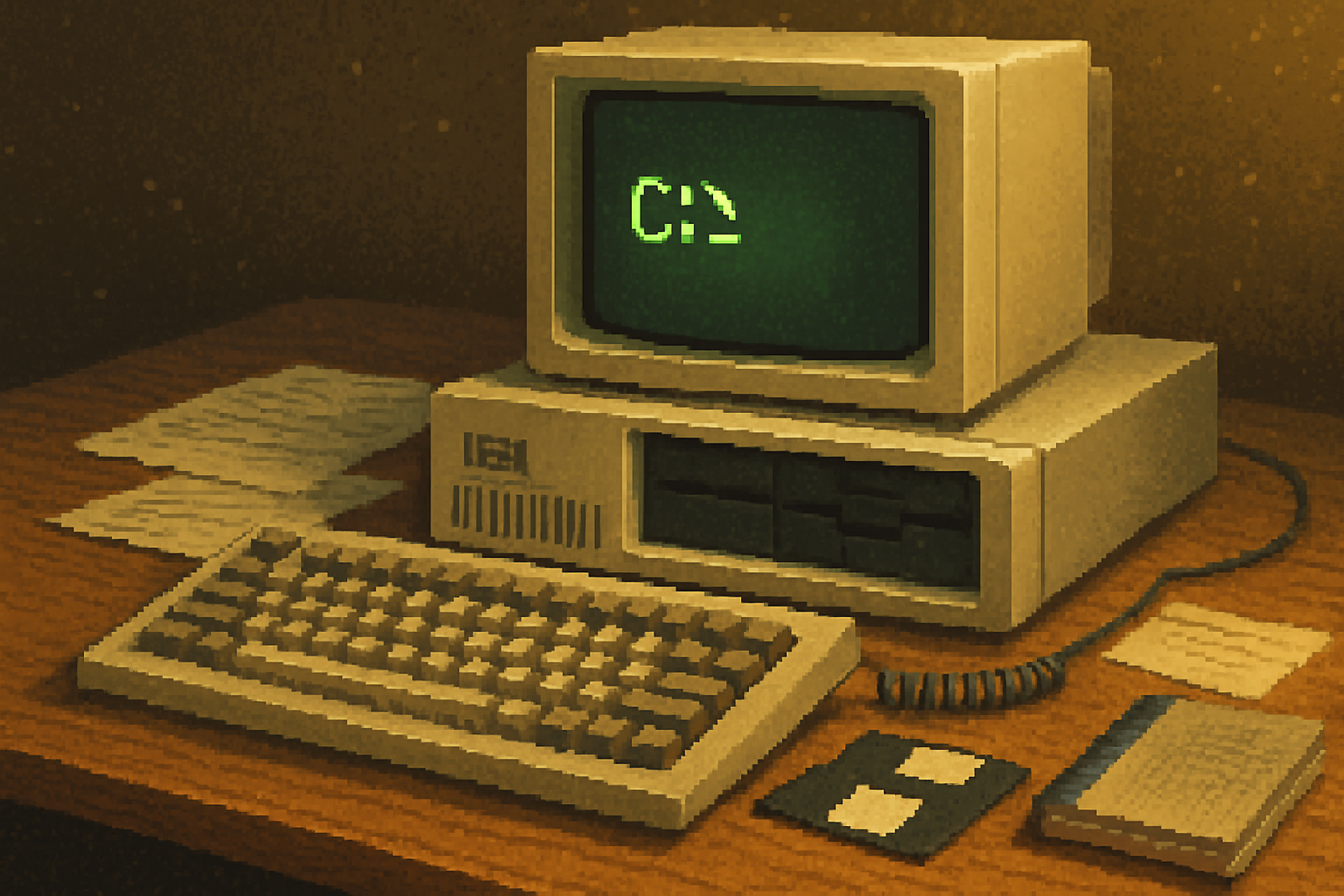· retrotech · 6 min read
NeXT Computer: The Visionary's Tool That Shaped the Future of Technology
How the NeXT Computer - a bold, developer-first machine conceived by Steve Jobs - introduced software ideas and tools (NeXTSTEP, Objective‑C, Interface Builder, Display PostScript) that directly seeded the World Wide Web, macOS, iOS and modern software development.

The NeXT vision: more than a computer
When Steve Jobs left Apple in 1985 he set out to build something different: not just a competitor to existing personal computers, but a platform optimized for building software. The result - the NeXT Computer and its operating environment, NeXTSTEP - was commercially limited but profoundly influential. It married advanced hardware, an elegant object‑oriented development environment, and a Unix-based kernel in ways that anticipated how modern software would be written, deployed and experienced.
This article traces what made NeXT special, the technologies it seeded (including the first widely used implementation of the World Wide Web), and how its DNA survives in the operating systems and developer tools we use today.
What the NeXT Computer actually was
The original NeXT Computer (announced 1988) was distinctive physically and architecturally: a compact, black magnesium cube with a magneto‑optical storage drive and high fidelity display technology. Under the hood it ran a Unix-like OS built on the Mach microkernel and BSD, and used Display PostScript to render its GUI with high typographic fidelity.
But the hardware details are only half the story. NeXT delivered a carefully integrated developer experience: a modern object‑oriented application framework (NeXTSTEP), a dynamic language and runtime (Objective‑C), and pioneering visual tools such as Interface Builder for assembling user interfaces graphically.
Key design elements included:
- Unix foundation (Mach + BSD) for stability, networking and multiuser concepts. See NeXTSTEP history: https://en.wikipedia.org/wiki/NeXTSTEP
- Display PostScript for resolution‑independent, document‑quality rendering of windowed interfaces.
- Objective‑C as the primary language for application frameworks, enabling message‑passing style object orientation. (Objective‑C: https://en.wikipedia.org/wiki/Objective-C)
- Interface Builder, Interface Builder’s early WYSIWYG approach to wiring UI elements to code, reducing friction between designers and developers.
Developer ergonomics: why NeXTSTEP mattered
What set NeXT apart was the attention to developer productivity. Rather than shipping a toolkit of widgets and expecting developers to stitch things together from code alone, NeXTSTEP provided a rich object library with established patterns for documents, windows, inspectors, views and event handling.
Combine that with Interface Builder and you have a rapid application development loop: build a UI visually, connect it to objects that live in the runtime, and iterate. That combination - powerful frameworks + visual UI tooling - is the ancestor of modern IDE-driven app development (Cocoa / Interface Builder in macOS and Xcode for iOS).
A short Objective‑C example shows the message-sending style that made code terse and expressive:
@interface Counter : NSObject
@property (nonatomic) NSInteger value;
- (void)increment;
@end
@implementation Counter
- (void)increment {
self.value += 1;
}
@end
// Usage
Counter *c = [[Counter alloc] init];
[c increment];Objective‑C’s runtime dynamism (message dispatch, categories, etc.) encouraged live, flexible designs that complemented NeXT’s development workflow.
The World Wide Web was born on a NeXT
One of the most cited historical footnotes about NeXT is that Tim Berners‑Lee created the first web browser and editor (called WorldWideWeb) on a NeXT workstation at CERN in 1990–1991. The NeXT environment - with its rich text rendering, networked Unix base, and integrated development tools - was a uniquely enabling platform for prototyping the hypertext ideas that became the Web. See Tim Berners‑Lee’s account and related history: https://en.wikipedia.org/wiki/WorldWideWeb_(browser)
That single project demonstrates how an engineered developer platform can accelerate invention: the Web’s initial implementation took advantage of NeXTSTEP primitives (UI, printing, networking and text) that would have been far harder to assemble on many contemporaneous machines.
Products and technologies that trace back to NeXT
NeXT’s direct and indirect influence is far reaching:
- macOS and iOS - Apple acquired NeXT in 1997 and used NeXTSTEP as the foundation for Mac OS X. Many of the modern APIs (Cocoa) are direct descendants of NeXT’s frameworks. See macOS lineage:
- Cocoa - The object frameworks and the design patterns (model–view–controller, delegates, notifications) popularized in NeXTSTEP became the Cocoa programming model for macOS and later iOS.
- WebObjects - NeXT developed WebObjects, one of the earliest enterprise web application frameworks; it influenced later server-side frameworks and was later adopted by Apple.
- The World Wide Web - As noted above, the first browser/editor/web server were developed on a NeXT workstation.
- Developer culture and tools - The integration of language/runtime, framework and visual design tools foreshadowed modern IDE-centric ecosystems.
Why NeXT “failed” commercially - and why that doesn’t matter
NeXT never became a mainstream PC vendor. The high cost of the hardware, niche positioning (developers, universities, research centers), and competition from cheaper PCs constrained sales. But commercial success was not the only metric that mattered. NeXT’s real product was a set of ideas: object frameworks, an integrated dev environment, and a Unix-based system optimized for application authors.
Often in technology, influence spreads not because a product wins in raw market share, but because its core ideas are portable and adopted elsewhere. Apple’s acquisition of NeXT is a textbook example: NeXT’s technology was the seed that revitalized Mac OS and, decades later, enabled the software stack behind the iPhone.
The technical legacy in practice
Today many parts of modern computing trace directly to NeXT:
- Cocoa on macOS and Cocoa Touch (iOS) are direct descendants of NeXTSTEP frameworks.
- Xcode and Interface Builder remain the canonical IDE and UI design tools for Apple platforms; their lineage goes back to NeXT’s visual tools.
- The emphasis on a rich standard library, opinionated frameworks, and developer ergonomics informs many modern platforms (e.g., .NET, Java frameworks, modern JS frameworks that ship batteries‑included).
- The World Wide Web’s very first implementation depended on NeXT’s runtime and UI features.
Timeline: a condensed chronology
- 1985 - Steve Jobs leaves Apple and founds NeXT.
- 1988 - NeXT Computer (the cube) is introduced with NeXTSTEP.
- 1990–1991 - Tim Berners‑Lee implements the first web browser on a NeXT at CERN.
- 1997 - Apple acquires NeXT; its software becomes the foundation for Mac OS X.
- 2001–present - Mac OS X (now macOS), iOS and many developer tools carry forward NeXT ideas.
(For further reading on timeline and NeXT details see https://en.wikipedia.org/wiki/NeXT)
Lessons for builders and platform designers
- Focus on developer experience. A platform that removes friction for creators can amplify innovation far beyond its initial customer base.
- Integration is powerful. Thoughtful integration of language, frameworks and UI tools creates a virtuous cycle that accelerates development.
- Long-term impact can outlive short-term commercial metrics. A technically elegant product can seed future ecosystems, even if it doesn’t dominate the market immediately.
- Invest in abstractions that scale. NeXT’s object frameworks provided reusable patterns that scaled from prototypes to production systems.
Conclusion
The NeXT Computer was more than an elegantly designed machine; it was a laboratory for rethinking how software should be built. By prioritizing a cohesive developer environment, object‑oriented frameworks, and world‑class UI tooling, NeXT shaped the trajectory of operating systems, development tools and the World Wide Web itself. Its commercial story may be a niche chapter, but its technical DNA remains central to modern computing.
References and further reading
- NeXT and NeXTSTEP - Wikipedia: https://en.wikipedia.org/wiki/NeXT
- Objective‑C - Wikipedia: https://en.wikipedia.org/wiki/Objective-C
- WorldWideWeb (first browser) - Wikipedia: https://en.wikipedia.org/wiki/WorldWideWeb_(browser)
- WebObjects - Wikipedia: https://en.wikipedia.org/wiki/WebObjects
- macOS - Wikipedia: https://en.wikipedia.org/wiki/MacOS
- Computer History Museum collection entry on NeXT: https://computerhistory.org/collections/catalog/102659300



